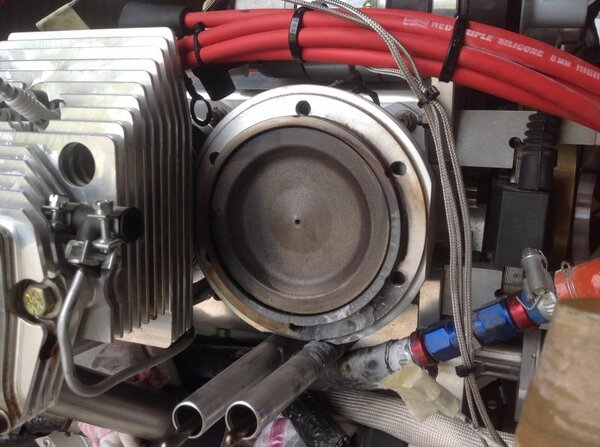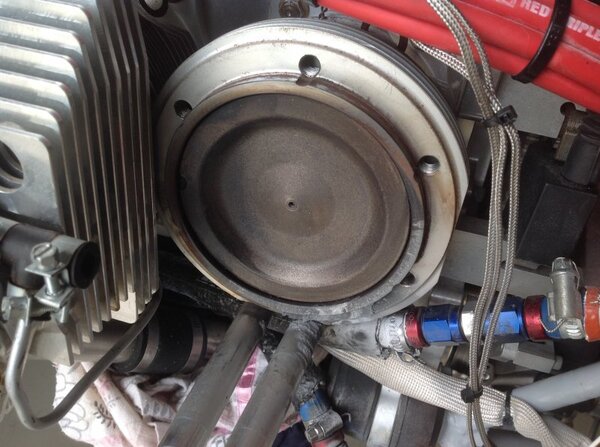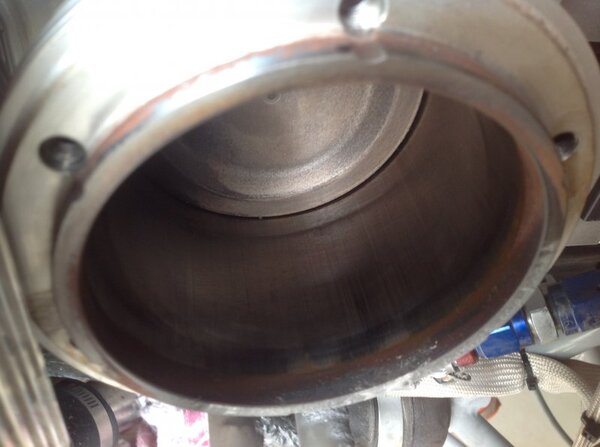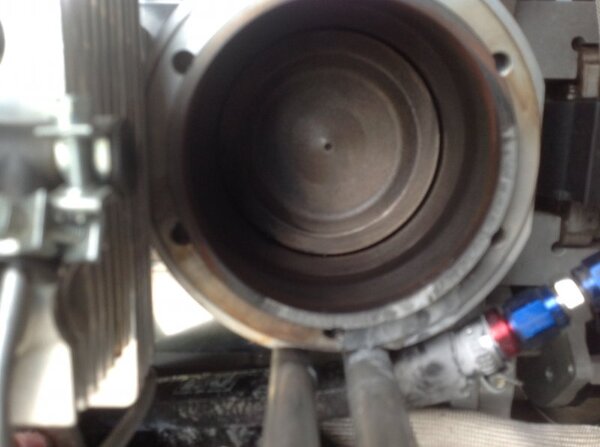-
Posts
207 -
Joined
-
Last visited
Content Type
Profiles
Forums
Gallery
Downloads
Blogs
Events
Store
Aircraft
Resources
Tutorials
Articles
Classifieds
Movies
Books
Community Map
Quizzes
Videos Directory
Everything posted by Scotty 1
-
I have had a CFI stop the fan in a glide approach from base. We had already been doing circuits and we were not lined up to touch down on the piano keys but well after them. I felt it was a very safe situation and appropriate action as we were training for that very senerio. He restarted at about 100 ft which disappointed me as I wanted to continue with the dead stick landing. He said he was happy that I could have landed dead stick but for safety would restart the fan. In the right circumstances I believe that is appropriate training.
-
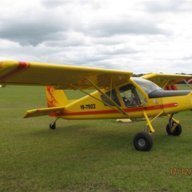
What to say when things go south for a loved one.
Scotty 1 replied to SDQDI's topic in Aircraft Incidents and Accidents
Excellent find Sam. -

Why I will be voting AGAINST the new constitution
Scotty 1 replied to shags_j's topic in Governing Bodies
Are we voting on a complete document: no, Disciplinary Procedures etc. Are we voting on a correct document : no, even those that are promoting and pushing for a yes vote say it could be done or worded better and will be fixed at a later date. Get it right first. We can not vote for individual special resolutions, it is a yes or no vote for all resolutions. I have voted and it is No. -
Just had a count of the engines I have around the farm, from 2stroke leaf blowers and chain saws to diesel tractors, 17 in total. No 18 with the plane, guess I had best spend next week checking the head bolt tension on them if that is what is needed. If it's to be an on going requirement I guess it will be a couple of days a month from now on. Thanks for letting me know the accepted standards 01rmb. Now can you tell me why the head bolt tension needs to be checked so often, and not just because it said so in the manual?
-
I agree Nev, I have seen a lot hotter. I don't believe the engine has been overheated which leaves the question as to the recessing of the head that would lead to loss of tension. A lot more pronounced around the area of the blowout, but still recessed on the opposite side. A lot more will be found with a tension wrench and a full strip down and inspection. That would also answer the question as to whether it has been inhibited correctly. Too many indicators in the bore for my liking but that may be from failure of that head. The condition of the other 5 pots will tell the story. An inspection by fully qualified people, not people on a forum looking at pics, is what will be undertaken. I merely put up some pics and asked some questions to see if it is a common problem. It doesn't appear to be that common with these engines. I hope we can all get some positive answers especially for the owner.
-
Would you agree that a pull through by a independent test pilot as well as the owner would show a soft cylinder? Does the manual say to re-tension the heads at between 5 and 10 hours? Would you suggest that as part of the pre-flight the heads should be re-tensioned before each flight? If the head bolts loose tension that is a seperate problem. Remember this was the third test flight. Why is it so hard to believe that something caused a hot spot in the head which caused localised heat that has resulted in a warped head losing the seal between the head and cylinder in a very localised area and created the blowout. Remember how a oxy cutting torch works? Have a close look at the pics again and show me any signs off overheating other than very localised. To the people actually involved with this engine, the question is what caused that localised overheating. There has been some very informed responses that have probably held the answer, but I wonder if we will ever have a positive answer. A full strip down may provide further indication of the condition of the internals that may lead to assumptions but it does appear that it is not a common problem or it would have been seen before. Once again, thanks for all your thoughts. Any more news and I will post again.
-
Have a close look at the first set of pics and you will see the cylinder has recessed into the head especially around the area of the blowout, would that not indicate that there was tension on the head bolts?
-
Sorry Oscar, but there is no other way to put this. You are totally wrong. Others have seen, it appears, what you can not. Same as in your post#12 your post #46 may have been in haste. There was no Loctite used on the heads. Anywhere. Bolts or mateing surfaces.
-
One further point: the last set of piccies ( especially Piccy #3) show an obvious amount of Loctite obvious amount of Loctite??????
-
-
The owner of the engine had been in touch with the manufacturer and followed all relative AD's and their advice over a number of years! There was no indications of any problems during the preflight. The plane was on it's third test flight with an independent test pilot. The test pilot was doing circuits when he identified what he at first thought was an exhaust leak and immediately landed. After landing and finding the "exhaust leak" the bolts were found to be loose during the head removal. Thank you all for your comments, especially the ones that made me laugh, and if there are any further developments or positive answers I will let you know but at this stage it looks like a flawed billet.
-
Taree. No sign of corrosion. No sticking valve. No indication. Look at the photos. After a 10 year build you may be able to understand how the owner of the plane feels.
-
It is VH rego and has been reported to CASA.
-
I have heard of the material used in Jab heads is of improper grade because of whatever the reason but if it was that alone I believe we would have seen many more pics like this. There is definately recessing of the head at the portion of the blowout especially, and the grade of the material may not have helped. After the plane landed following this problem during it's third only flight of the test flying period the head studs were loose on that head only. Nothing was found in the preflight checks. As I have said only less than 5 hours total on a new motor even though as Oscar has stated it is an older model motor. The test pilot stated the temps were all good. The sender units were then checked to see if they were reading correctly and they tested ok. I believe there may have been a fault in the billet material that has started the problem with maybe a hot spot which has caused the blowout. The grade of material and the fact it is billet may have contributed to the problem. The plane has been run on avgas but for only less than 5 hours and again no signs of improper combustion or lead buildup. Your thoughts?
-
You are right in what you say about the early model motor Oscar, but it is definately not from mechanical failure of any part of the valve gear.
-
Nev, no indication of any other problem, no broken bolts so it is starting to look like poor or faulty material. That is our guess without any further testing too Lyle.
-
Piston and cylinder all look good. You might be on the money with "casting issue" Mike or more likely material issue.
-
6 cylinder Jab. There is an indication the cylinder has recessed into the head so I would assume it has been torqued at some stage. Less than 5 hours.
-
I have just been shown this head this morning and post the pictures for your comments. The motor has less than 5 hours on it as the plane is in the test flying period and all 6 cylinder temperatures were reading within limits. Temp probes have all been checked and found to be reading correctly. Any ideas? Cheers Scotty.
-
As you know Nev there is also the quality of the fuel as in Mogas and ethanol that comes into play too. That is why I suggested it may pay to look at a different material for the gaskets. I still believe, given the quality of the fuel that may be used at different locations in the outback that a glass filter that can show contaminates in the system is a good investment as long as it is maintained properly. In the Hornets these filters are a primary filter, just under the wing tanks before the header tank and the gascolator. Can't see the gauze in the gascolator and can only drain it to check for contaminates on a daily preflight. Even though the alloy tanks were sloshed I was supprised how much swath showed up in the glass filters after the build. Nice to be able to see that before it gets further down the line. Cheers Scotty.
-
Fully aware of the problems with the filters Sam and they have been covered already in this thread ie. The tendency of people to overtighten the filters ( you don't need 2 x 15" shifters to tighten them) and there was a batch that had very poor threads on the connecting rod between the two end caps and as you have stated the remaining glass filter in your plane has a different connecting rod. A third problem that has shown up seems to be when the fuel is turned off and the filter drains and the gaskets dry out. The gaskets seem to shrink and then leak when the fuel is turned on again after some time. Which in turn then may lead back to the over tightening issue. Maybe the gaskets could be changed to a better material? Given the problems mentioned Ole has advised some to change to the different filters as fitted to your two primary filters. I still retained the glass filters when we serviced my plane at the factory a couple of weeks ago. I see the advantages of being able to see fuel flow and filter contamination through the glass a big plus. If you do get a bad batch of fuel that contaminates the filter you can see it and clean the filter before it totally blocks or servely restricts the fuel flow, well in theory anyway. Just don't overtighten after cleaning them. As I stated before these filters were fitted as standard to certified Airborne Trikes but I don't know if they still use them now but can still be bought from http://www.aircraftspruce.com/pages/ep/fuelfilters/univinlineff.php Cheers Scotty
-
I have my filters supported either side by p clamps and have not had a problem. This type of glass filter was standard on Airborne Trikes also. I do believe there has been some problems if not tightened properly. I still believe if you maintain them and fit them properly there is the advantage of seeing (or not seeing) the fuel flowing.
-

Who has "looped" a taildragger
Scotty 1 replied to bexrbetter's topic in Aircraft General Discussion
Started in tricycle and when doing the tailwheel endo like Nev said, soon found I had lazy feet so I would go out onto the grass cross strip, partial power, taxi at about 25knots and lift and lower the tail. I can tell you things happened real quick. Did a couple 180's and can remember skidding off the runway backwards with the brakes locked on. Gets the heart rate up. Might have been a bit different if it was on the black stuff. Haven't ground looped since then (yet) and part of my checks both pre taxi and pre landing is to wriggle my feet and say to myself , dance feet, dance. -

Pilot dies in light aircraft crash south of Townsville
Scotty 1 replied to Robbo's topic in Aircraft Incidents and Accidents
In many incidents like this there are more than one factor that lead up to the final outcome. Was there an total engine out? Was there a definite turn back? Was there a miss or a vibration? Was there a partial power loss before a total fail? Did Ross think "this is not feeling right, might do 1 quick circuit and land? Was the morning being rushed? Was Ross on top of his game both mentally and physically that morning? Was the field suitable to conduct test flying from. Was there an airframe or control failure? Was there an inflight fire? The list goes on and all these factors may or may not lead to an outcome as tragic as this one. When any of these factors are involved, what would you do? If more than one is involved, what would you do? Ross with his experience would have been aware of these and many more things that can go wrong with this pastime of ours and I believe he made a decision to accept the risks he knew of to enjoy the pleasure of flight. An engine out does not always mean death. A turn back does not always mean death. There must be other factors involved. We don't know yet and we may never know. Let's assess what has happened to try and learn and then make a judgment as to wether we as individuals are prepared to take the risks, as Ross did, to enjoy our pastime, BUT we must do it with RESPECT! Respect for Ross who chose to fly that morning with all his knowledge! Respect for Ross's loved ones in their time of grieving! Respect for Ross's mates who have lost a good friend! Respect for the owner of the plane that Ross was putting back in the air so he to could enjoy the pleasure of flight that Ross did! (If it was your plane how would you feel?) Ross had many more hours and experience than most of us and he chose to fly that morning so let's show him and his family and friends the respect they deserve at a time of great loss. RIP Ross Millard.- 388 replies
-
- 15
-

-

-

-
[ATTACH=full]37316[/ATTACH] Is the Operating Grant of $132,534.00 in 2014, and then $116,626.00 in 2015 the total amount due from CASA for the year? Less money for more work?


